Bay of Biscay
Type of resources
Available actions
Topics
Keywords
Contact for the resource
Provided by
Years
Formats
Representation types
Update frequencies
status
Scale
Resolution
-
Stocks of Crepidula fornicata Linnaeus, 1758 in the Pertuis Charentais. Environmental state for 2011
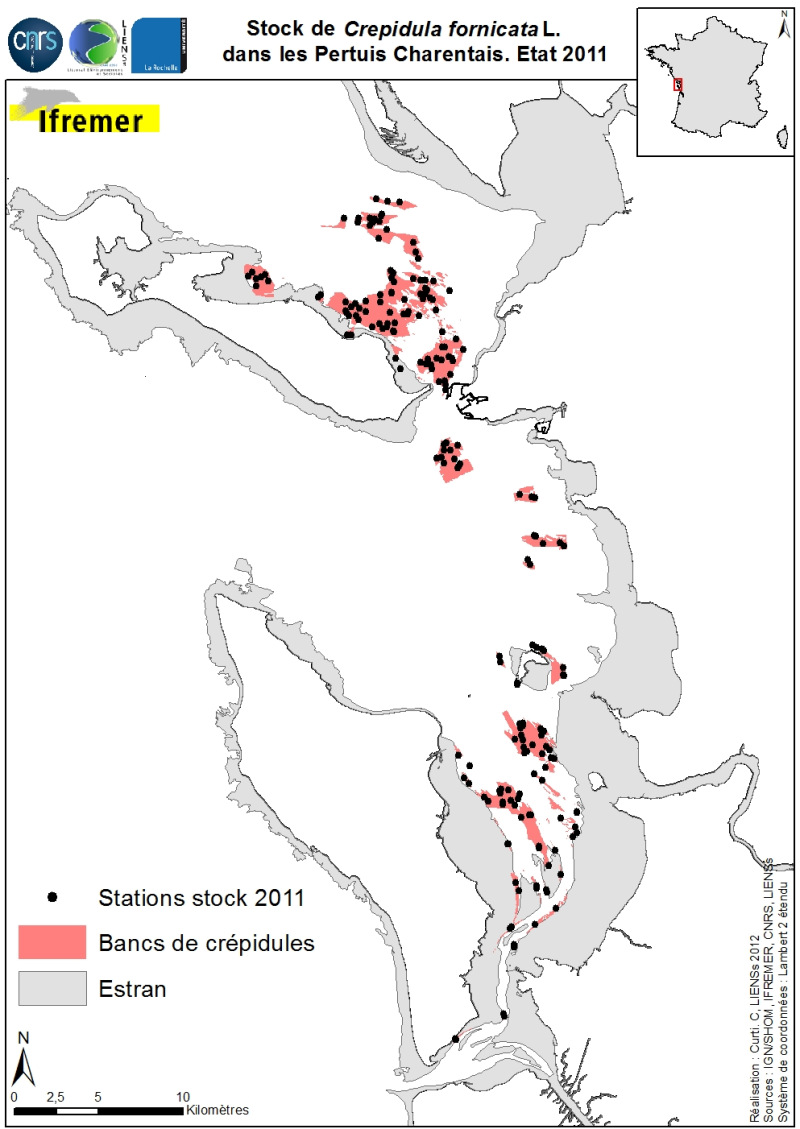
Stocks (abundance and biomass) of the slipper limpet Crepidula fornicata Linnaeus, 1758 in the Pertuis Charentais shallows were estimated in 2011 and mapped (Sauriau et al., 2011). The influence of the estimate includes the Pertuis Breton, the eastern part Pertuis Antioch Fouras peninsula and the Bay of Marennes-Oléron where the latter earlier estimates are available. Contours and surface areas of the crepidula were previously determined by acoustic imaging performed aboard the VO/Haliotis in 2008 and 2009, interpreted and validated by spot sampling in 2009 (Curti, 2009). Sampling stocks of 2011 is based on a stratified random sample of 40 banks with a proportional distribution of sampling of 200 stations between banks. The listing for each crepidula bank stocks (abundance in millions, biomass in tonnes) both living and dead, these shells may provide support to potential new colonization.
-
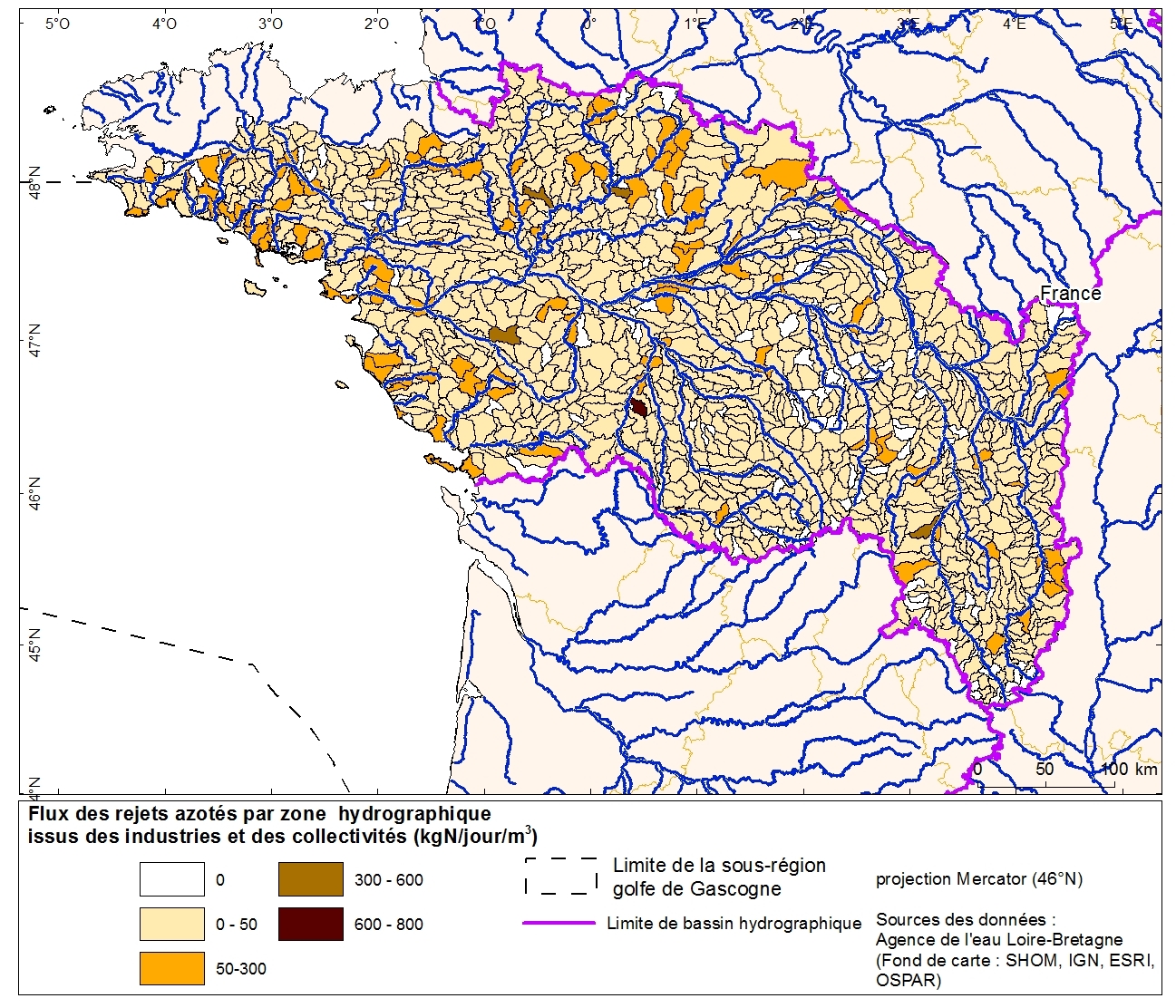
Discharges of nitrogen, phosphorus and organic matter per hydrographic zone from industries and communities in the Loire-Brittany basin. This data was collected as part of the initial assessment of the MSFD with the Water Agency of Loire-Bretagne. Referent expert AAMP: Aurélie Blanck.
-
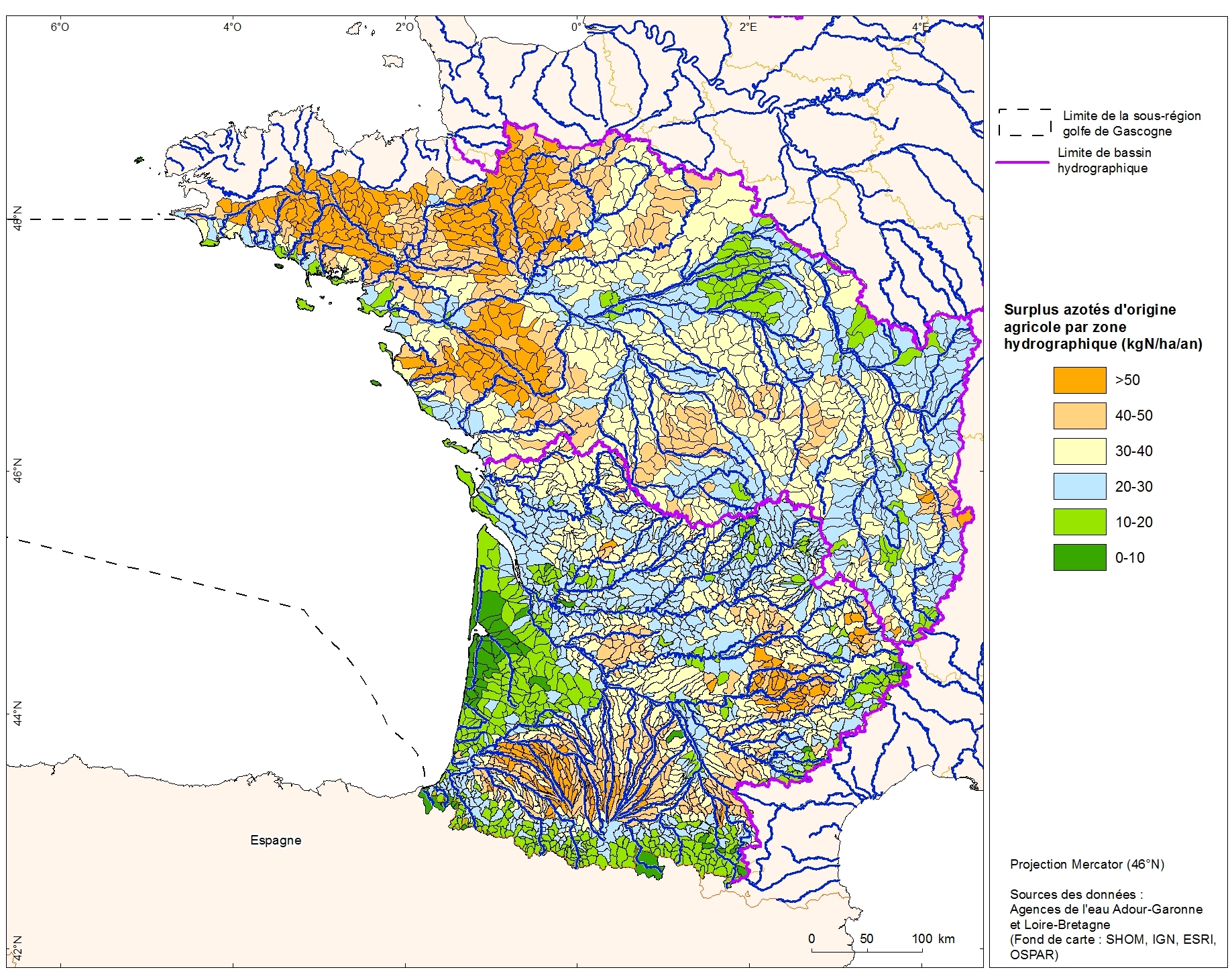
Excess nitrogen from agricultural drainage by hydrographic zone in the Adour-Garonne basin. This data was collected as part of the "initial state" phase of DCSSM with the Adour-Garonne Water Agency. Referent expert AAMP : Aurélie Blanck. Partial description of the fields: "kgN_ha_an" : nitrogen surplus (kgN / ha / year)
-

Excess nitrogen from agricultural drainage by hydrographic zone in the Loire-Bretagne basin. This data was collected as part of the "initial state" phase of DCSSM with the Loire-Bretagne Water Agency. Referent expert AAMP : Aurélie Blanck.
-
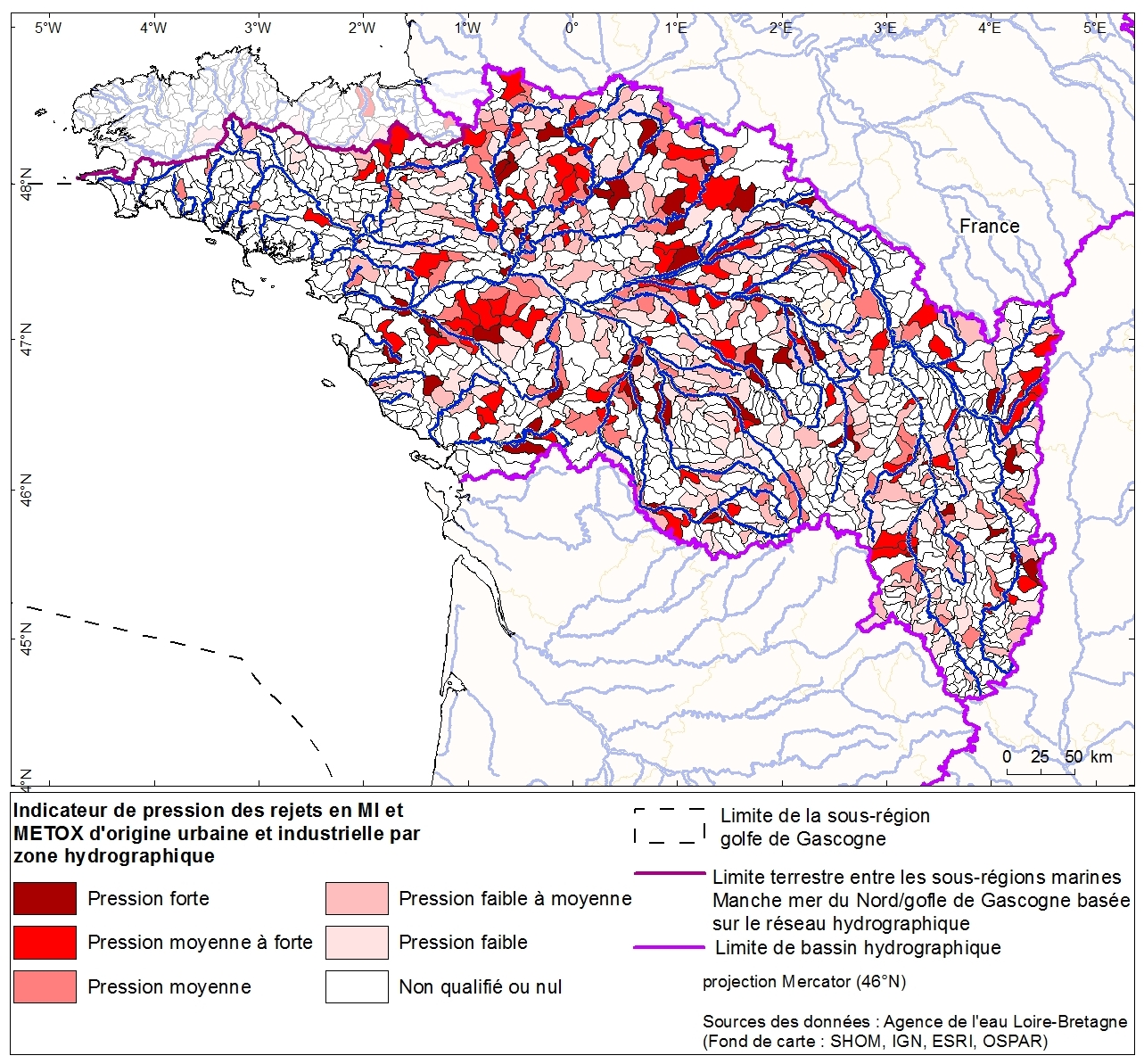
Toxic discharges from urban and industrial sources per hydrographic zone of the Loire Bretagne basin. This data was collected as part of the initial assessment of the MSFD with the Water Agency of Loire-Bretagne. Referent expert AAMP: Aurélie Blanck.
-
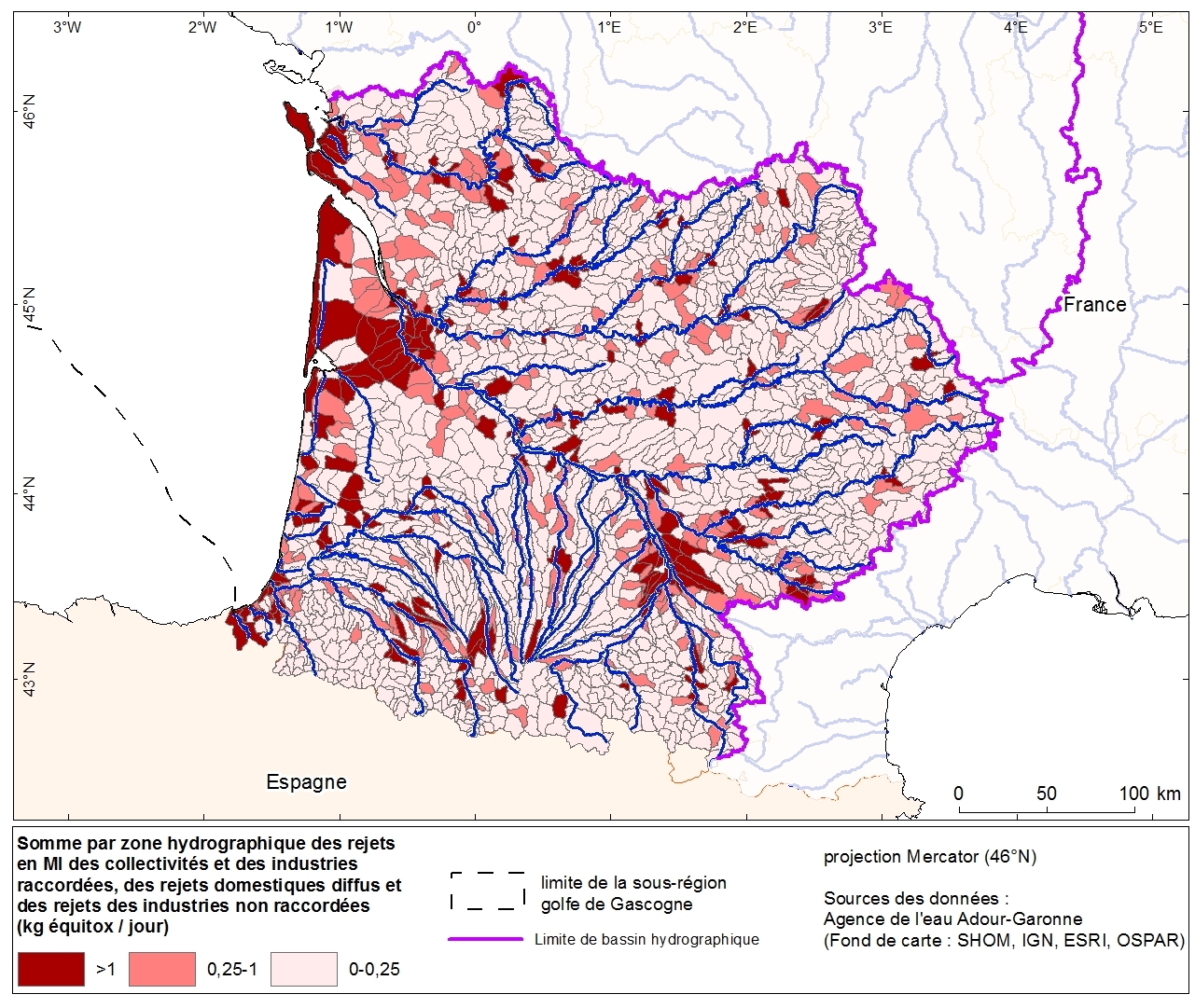
Discharges of nutrients (nitrogen, phosphorus and organic matter) and toxic releases (MI) per hydrographic zone from industries and communities of the Adour-Garonne basin. This data was collected as part of the initial assessment of the MSFD with the Water Agency of Adour-Garonne. Referent expert AAMP: Aurélie Blanck.
-
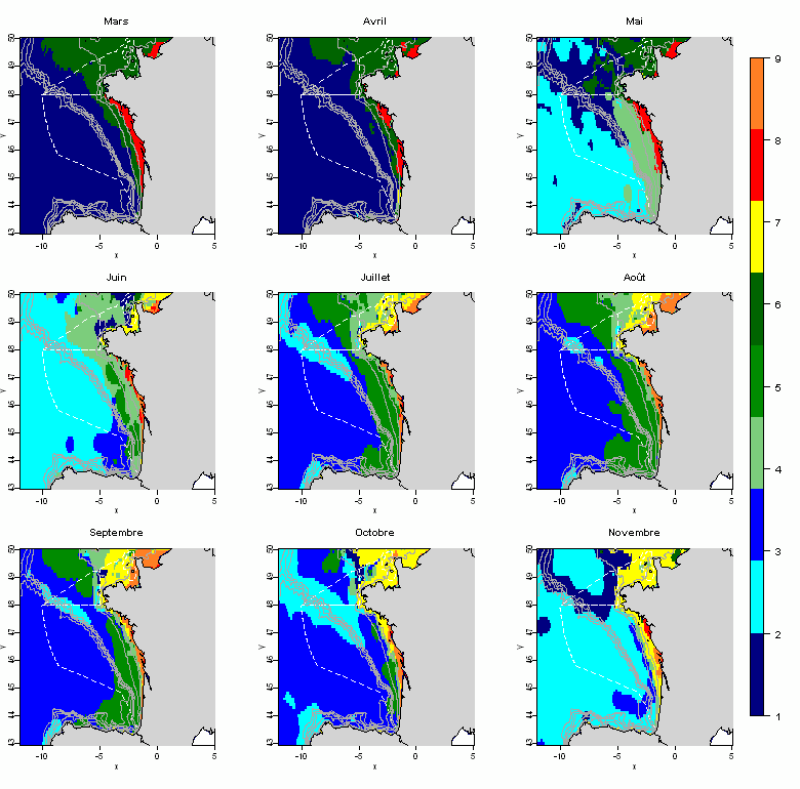
The statistical analysis used (Principal Component Analysis followed by a classification method) to identify groups common to all months and describe the evolution of these groups during the year. The data used allows for monthly tables showing the selected parameters, calculated over the entire geographic area with a resolution of 0.1 °. This method identifies 10 hydrological landscapes present at various times of the year, and characterized by homogeneous hydrological conditions.
-
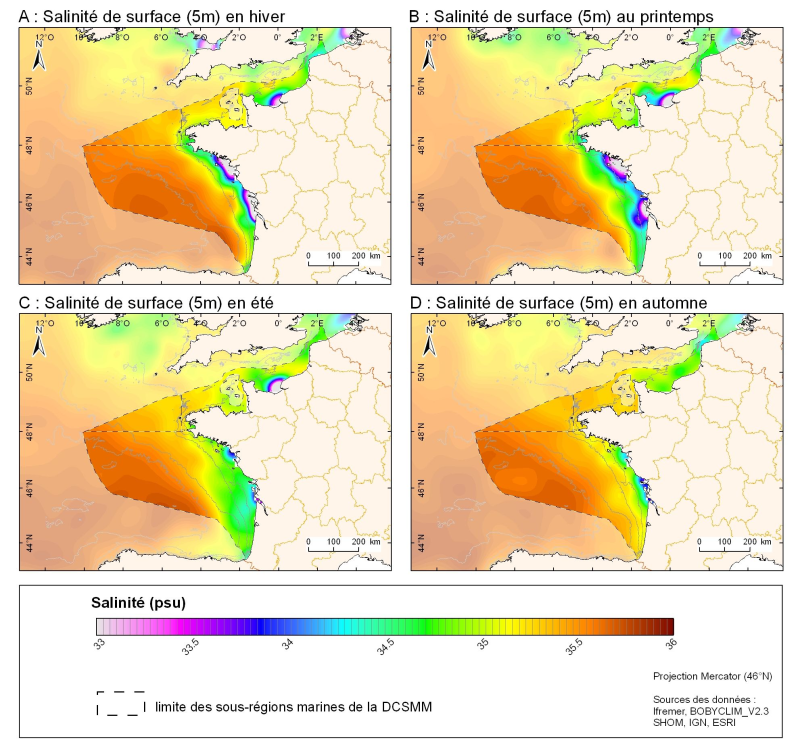
3D seasonal salinity field (in Psu) obtained by objective analysis (interpolation) of the raw data in situ at 5m depth. Within the Bay of Biscay Challenge and the programme of the Operational Coastal Oceanographic Centre Prévimer, the services of SISMER DYNECO-PHYSED of IFREMER have built a joint hydrological database of the Bay of Biscay, from CTD measurements, Bouteilles, XBT / MBT and Profileurs from multiple global data centres to achieve a climatological atlas of the region for temperature and salinity.
-
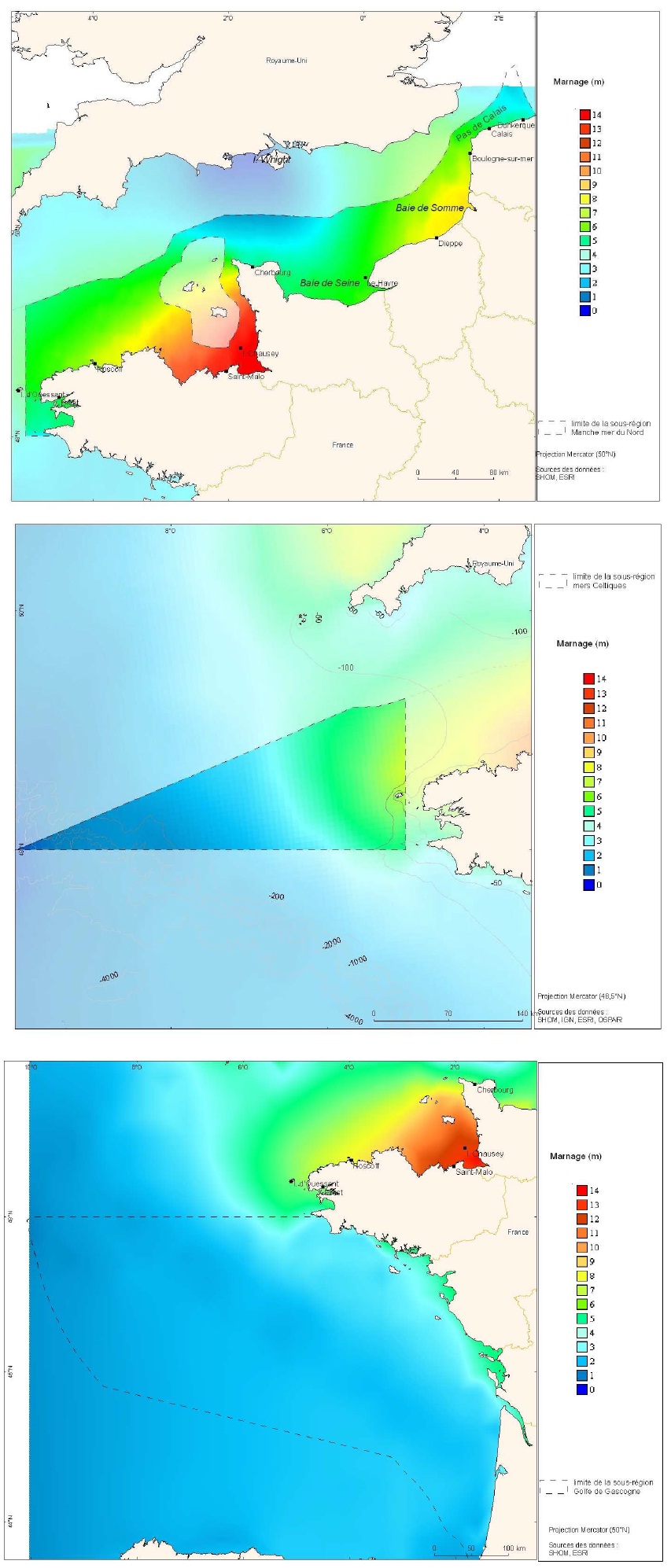
-
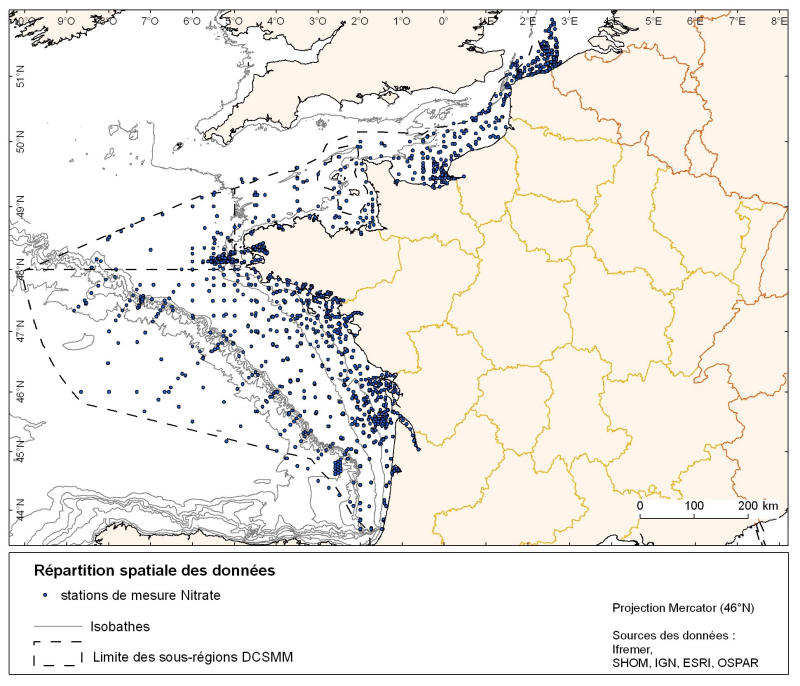
Spatial distribution for nutrients data (silicate, nitrate, nitrite, ammonium and phosphate) for all maritime regions in the English Channel and North Sea, the Celtic Seas and the Bay of Biscay. The temporal extent of the data is from 1930 to 2010, most being between 1974 and 2007 with a peak in 1999.
 Catalogue PIGMA
Catalogue PIGMA